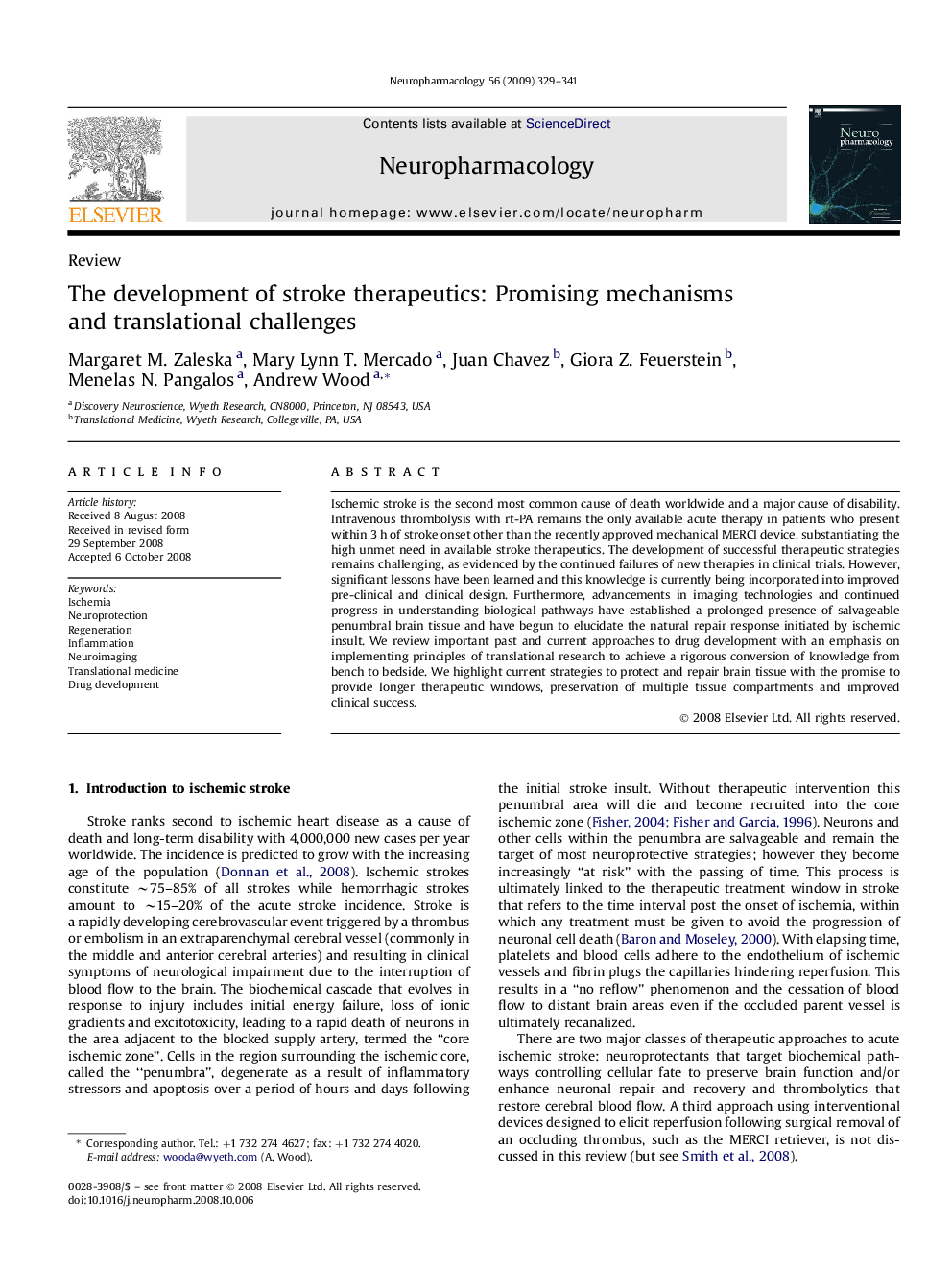| Article ID | Journal | Published Year | Pages | File Type |
|---|---|---|---|---|
| 2494246 | Neuropharmacology | 2009 | 13 Pages |
Ischemic stroke is the second most common cause of death worldwide and a major cause of disability. Intravenous thrombolysis with rt-PA remains the only available acute therapy in patients who present within 3 h of stroke onset other than the recently approved mechanical MERCI device, substantiating the high unmet need in available stroke therapeutics. The development of successful therapeutic strategies remains challenging, as evidenced by the continued failures of new therapies in clinical trials. However, significant lessons have been learned and this knowledge is currently being incorporated into improved pre-clinical and clinical design. Furthermore, advancements in imaging technologies and continued progress in understanding biological pathways have established a prolonged presence of salvageable penumbral brain tissue and have begun to elucidate the natural repair response initiated by ischemic insult. We review important past and current approaches to drug development with an emphasis on implementing principles of translational research to achieve a rigorous conversion of knowledge from bench to bedside. We highlight current strategies to protect and repair brain tissue with the promise to provide longer therapeutic windows, preservation of multiple tissue compartments and improved clinical success.
